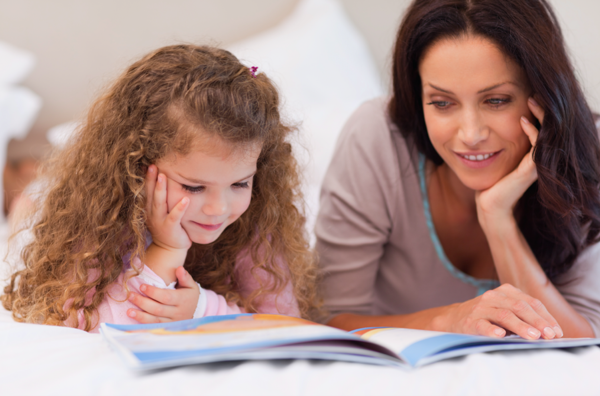5 Ways to Build Your Child’s Language Skills at Home

For a large portion of the school day, your child is engaged in a variety of language development activities like singing songs, reading books, and naming objects in the classroom. These are all good activities to expose children to language and expanding vocabulary. But did you know there are types of interactions you can easily do at home to help support your child’s language development and increase their vocabulary?
Here are 5 easy language activities that can be done in the classroom or at home!
1. Self-talk is when we tell your child what we are doing using the present tense. For example, saying, "I am placing you on the changing table to change your diaper." This statement explains to your child what is currently happening and why she is being placed on the changing table. These types of statements provide an explanation for what is happening to the child as well as connecting words with actions.
2. Parallel talk is a good way to share language with your child during play. It is when we say what your child is doing. For example, while observing your child play in the block area, we might say, "Breanna, I see you stacked the red block on top of the blue block.” When we do parallel talk with your child, we are helping him connect words with actions and also acknowledging what your child has accomplished through their play.
3. Talking about feelings and labeling feelings is essential for healthy social emotional development. When you identify a feeling your child is experiencing, you are increasing his emotional vocabulary, helping him understand his emotions, and assisting him with identifying emotions in himself. For example, if your child is crying and experiencing separation anxiety, you could say, "Deshaun, I know you feel sad about Daddy leaving. We are going to play with toys, sing songs, and play outside while Daddy is at work. Daddy will come back when he is finished with work.” These types of interactions are the first steps to introducing your child to identifying emotions.
4. Sharing information with your child is the foundation of teaching. When interacting with your child, try adding 3 additional facts to the conversation. For example, your child brings you a toy giraffe. Say, "I see your giraffe. He has a long neck. He eats leaves from tall trees. He lives in Africa." Sharing information with your child in this way enhances your child's understanding of the world and extends the learning experience.
5. Verbal play is a fun and silly way to expose your child to language. When reading to your child, look at and tap the pictures. Make up silly rhymes or use rhyming words while you are changing diapers or help with toileting. Try singing songs during bottle feedings/mealtimes or transitions for rhythmic play with words. Use finger play songs, felt board stories, and act out popular children’s books as a way to incorporate gestures with language. These are ALL ways to insert verbal play with language development throughout the day. Early language exposure is critical for later literacy development. Making it fun helps your child learn.
Being intentional with language is important in order to provide a rich language experience for your child.
You are contributing to your child’s word bank of between 5,500 to 6,500 words before starting kindergarten. So, always remember, the words we use are important and matter!
Based on an original article by Nicole Shea, Education Specialist at The Sunshine House.